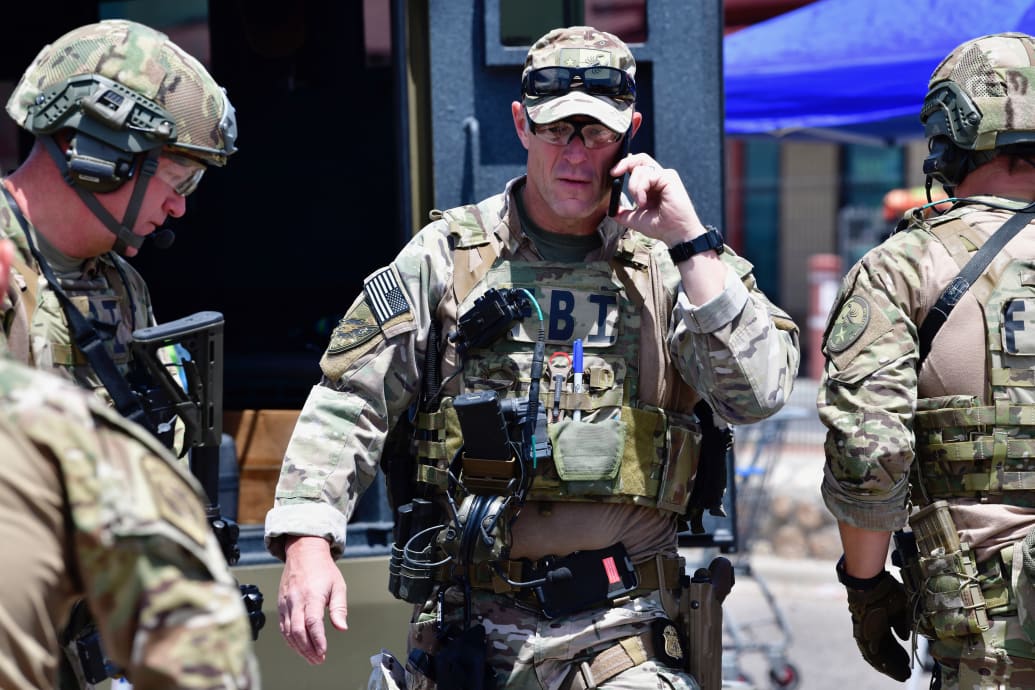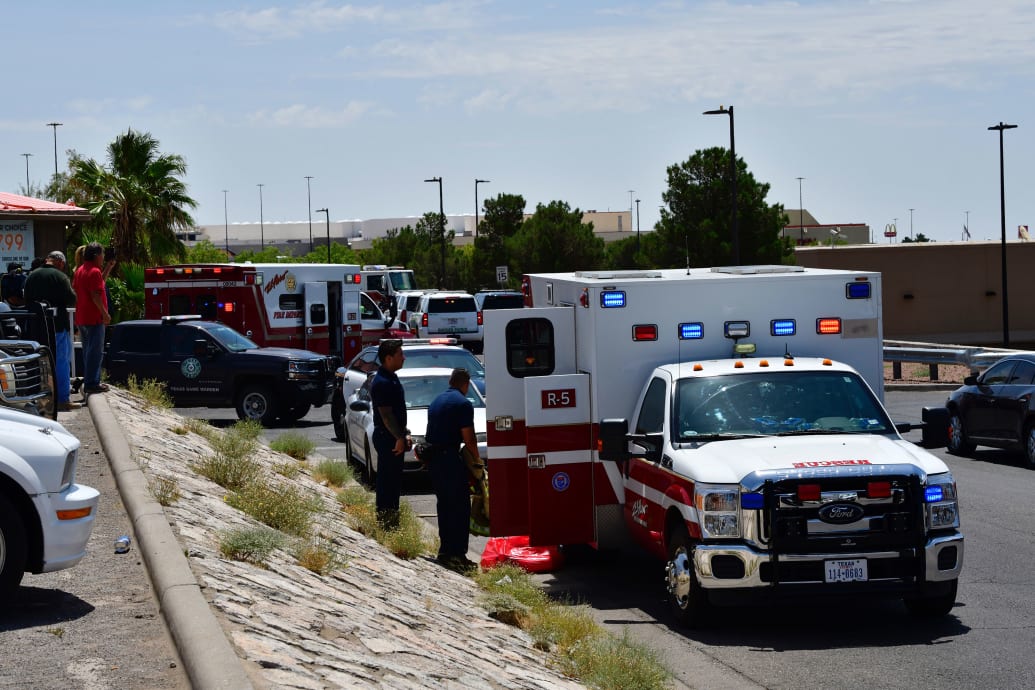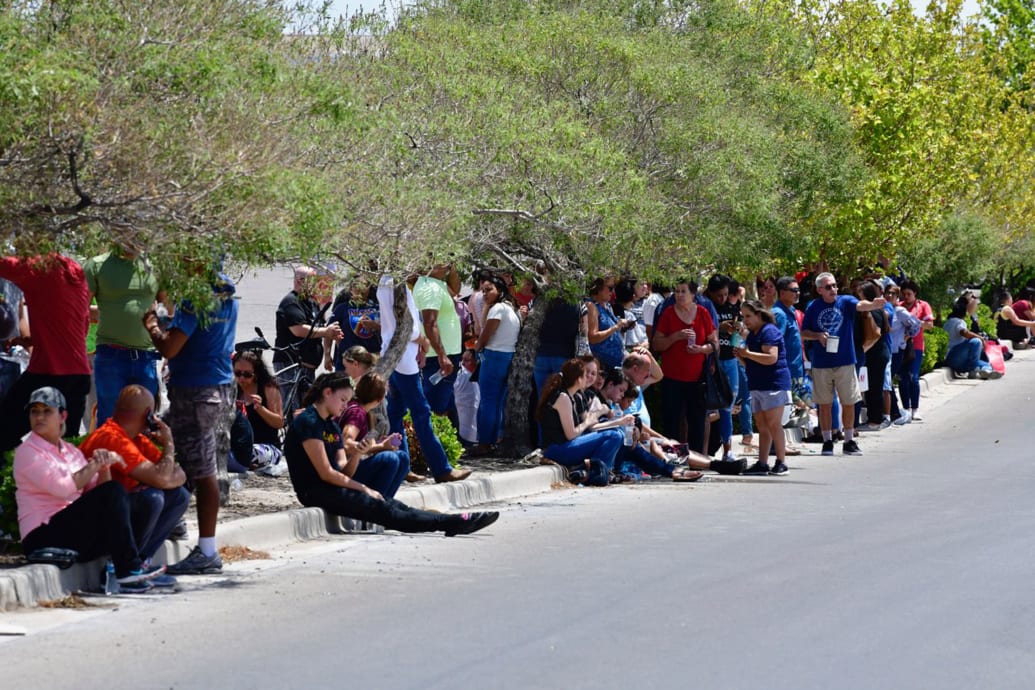Dayton incident comes hours after at least 20 people died in a mass shooting in El Paso, Texas
The Guardian, by Frances Perraudin, 4 Aug 2019 12.07 BSTNine people have been killed in Ohio and at least 26 injured in the second mass shooting in the US in less than 24 hours.
Police said the suspect opened fire in the Oregon district of the city of Dayton at 1m local time (6am BST) on Sunday, before being shot and killed by responding officers.
The mayor of Dayton, Nan Whaley, said the gunman was wearing body armour. He used a 223-caliber rifle magazine and had additional high-capacity magazines with him.
Whaley said the injured had been taken to a number of hospitals and that some had life-threatening wounds.
She added uniformed officers were in the area when the suspect started shooting. “In less than one minute, Dayton first responders neutralised the shooter. While this is a terribly sad day for our city, I am amazed by the quick response of Dayton police. They saved literally hundreds of lives.”
She said: “As a mayor this is a day that we all dread happening and certainly what’s very sad is … that so many of us have gone through it.”
Earlier on Sunday morning, Matt Carper of the Dayton police department said the shooting had taken place “over a very short timeline” on the city’s East 5th Street. Nine people were known to have been killed, not including the shooter.
“Currently we are working on identifying the suspect to see what the possible motivation might have been. We do not have that yet,” he said. “The suspect was firing a long gun with multiple rounds at the victims.”
Carper said the police’s initial investigation suggested the shooter had been acting alone, but that inquiries were in their early stages. He said they were interviewing dozens of witnesses to establish what happened.
Video from the scene near downtown Dayton showed a number of emergency vehicles on a street that had been cordoned off. The FBI was assisting with the investigation and a family assistance centre had been set up at the Dayton Convention Center. Carper called on those with information about the incident to contact police.
The Oregon district is a historic neighbourhood near downtown Dayton, home to bars, restaurants and theatres. Carper said officers routinely patrolled the area, which was popular with visitors.
“We are very fortunate that the officers were in close proximity and that they reacted in the way that they did,” he said. “As bad as this is, it could have been much, much worse as I think everyone will become aware of here as more information unfolds. So we’re very appreciative of the officers who were on scene and the action that they took.
“This is obviously a very difficult situation. They put themselves in harm’s way. That’s what they are here for – to protect the public – and that’s what they did tonight.”
The Ohio shooting came hours after a young man allegedly opened fire in a crowded shopping area in El Paso, Texas, leaving 20 dead and more than two dozen injured.
Days before, on 28 July, a 19-year-old shot and killed three people, including two children, at the Gilroy garlic festival in northern California.
The El Paso shooting was the 21st mass killing in the US in 2019, according to a database compiled by the Associated Press, Northeastern University and USA Today. The database tracks all US homicides since 2006 involving four or more people killed, not including the offender, over a short period of time regardless of weapon, location, victim-offender relationship or motive.
That makes Sunday’s shooting in Dayton the 22nd mass killing in the US this year. The first 20 mass killings in the US in 2019 claimed 96 lives.
Mike DeWine, the Ohio governor, tweeted that he was heartbroken by the attack. He commended Dayton police and other first responders for “their bravery and quick response to save lives and bring an end to this tragedy”.
“I have ordered that flags in Ohio remain at half-mast in honour and memory of the victims who lost their lives this morning,” he said.
The Associated Press contributed to this report








You must be logged in to post a comment.